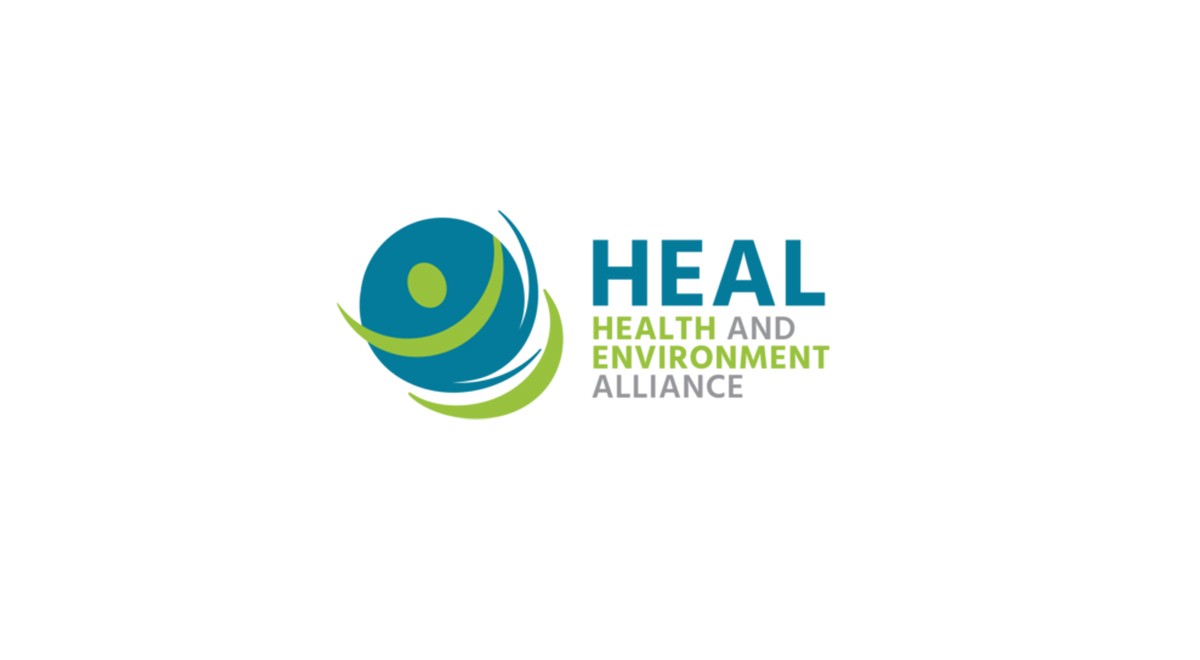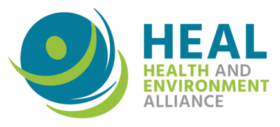Members of the European Parliament voted against the draft text for a Sustainable Use of Pesticides Regulation (SUR), following a substantial hollowing out of the draft law. This is worrying news for health.
Brussels, 21 October – A new review of carcinogenicity assessments of pesticide active ingredients shows 40 percent of them are not carried out in compliance with existing European guidelines, leading to possible continued exposure of farmers and consumers to cancer-causing pesticides [1]. In 30 percent of the cases significant details were missing from the dossiers, raising uncertainties about how European authorities came to a conclusion.
The report ‘Chronically underrated – A review of the EU carcinogenic hazard assessment of 10 pesticides’, released today by Pesticide Action Network (PAN) Germany and the Health and Environment Alliance (HEAL) analysed the carcinogenicity sections of the draft Renewal Assessments Reports (RARs) of ten pesticides [2]. The review, performed by senior toxicologist Peter Clausing, focused on how the sections describing carcinogenicity studies in rats and mice in the EU assessment documents complied with the applicable guidelines and guidance documents of the EU and the Organisation for Economic Co-operation and Development (OECD).
“After discovering a considerable number of flaws in the carcinogenicity assessment of glyphosate, it was the logical next step to investigate whether similar problems occurred with other pesticides. Analysing these ten RARs has made it clear that at least three of the pesticides should have been classified as ‘presumed’ human carcinogens, rather than just ‘suspected’ human carcinogens”, explained Susan Haffmans, Senior Advisor on Pesticides at PAN Germany.
The carcinogenicity classification triggers the regulatory fate of a pesticide active ingredient. Pesticides classified as ‘suspected’ human carcinogens can be marketed, while those classified as ‘presumed’ human carcinogens cannot or must be withdrawn [3].
Our report shows that:
- For three pesticides, the outcome of our review was similar to that of the European authorities: chlorothalonil, diuron, forchlorfenuron;
- For three pesticides, the outcome of our review differed from that of the European authorities and we found that the classification should be upgraded: folpet, pirimicarb and thiacloprid;
- For one pesticide, our review found that severe data gap should have been identified by the European authorities and a flawed decisive carcinogenicity should not have been accepted: phosmet;
- For three pesticides, our review found that reports were not sufficiently informed to allow any conclusive external review: captan, chlorpropham, dimoxystrobin.
“The current rise of non-communicable diseases including cancer means that Europe cannot afford the health price of flawed pesticides classifications”, commented Genon K. Jensen, Executive Director of the Health and Environment Alliance (HEAL). “Committing to a rigorous implementation of European laws should be a founding block of reaching Europe’s zero-pollution objective to prevent diseases and protect people, starting with farmers, from substances toxic to their health.”
PAN Germany and HEAL call on the European Commission President-elect Ursula von der Leyen to pay particular attention to a more rigorous application of existing pesticide legislation and guidance documents. In her recent confirmation hearing at the European Parliament, the Commissioner-designate for Health Stella Kyriakides already agreed Europe needs to reduce dependency on pesticides and stimulate the take-up of low-risk and non-chemical alternatives [4].
Une évaluation de la cancérogénicité erronée pour 4 pesticides sur 10, selon un nouveau rapport
Bruxelles, le 21 octobre – Un nouvel examen des évaluations de la cancérogénicité des substances actives de pesticides montre que, sur un échantillon de 10 évaluations, 4 n’étaient pas conformes aux lignes directrices en vigueur en Europe, laissant les agriculteurs et les consommateurs potentiellement exposés à des pesticides cancérogènes [1]. Dans 3 autres cas, des informations importantes manquaient aux dossiers d’évaluation, soulevant des incertitudes sur la manière dont les autorités européennes avaient tiré leurs conclusions.
Le rapport intitulé « Une sous-estimation chronique ? – Une revue critique de l’évaluation européenne de la cancérogénicité de 10 pesticides », publié aujourd’hui par le Pesticide Action Network (PAN) Allemagne et l’Alliance pour la Santé et l’Environnement (HEAL), passe en revue les sections relatives à la cancérogénicité des « rapports d’évaluation de la demande de renouvellement » (ou RAR) de dix pesticides [2]. La revue, réalisée par le toxicologue Peter Clausing, porte sur la conformité des sections des RAR, décrivant les études de cancérogénicité chez le rat et la souris, avec les lignes directrices de l’Organisation de Coopération et de Développement Économiques (OCDE) et les documents d’orientation de l’UE.
« Après avoir découvert un nombre considérable d’erreurs dans l’évaluation de la cancérogénicité du glyphosate, il nous paraissait logique de rechercher si des problèmes similaires se posaient avec d’autres pesticides. L’analyse de ces dix RAR a clairement montré qu’au moins trois des pesticides auraient dû être classés « cancérogènes présumés pour l’être humain », plutôt que « cancérogènes suspectés pour l’être humain » », explique Susan Haffmans, experte Pesticides de PAN-Allemagne.
La classification de la cancérogénicité conditionne le devenir réglementaire d’une substance active pesticide. Les pesticides classés « cancérogènes suspectés pour l’être humain » (catégorie 2) peuvent être commercialisés, tandis que ceux classés « cancérogènes présumés pour l’être humain » (catégorie 1B) sont interdits de commercialisation ou doivent être retirés du marché [3]
Comme le démontre notre rapport :
- Pour trois pesticides, les conclusions de notre revue sont similaires à celles des autorités européennes : chlorothalonil, diuron, forchlorfénuron ;
- Pour trois pesticides, les conclusions de notre revue diffèrent de celles des autorités européennes et la classification doit être révisée en catégorie 1B : folpet, pirimicarbe et thiaclopride ;
- Pour un pesticide, l’étude de cancérogénicité comportait de telles lacunes dans les données qu’elle n’aurait pas dû permettre sa classification en tant que « cancérogène supposé » : phosmet ;
- Pour les trois derniers pesticides, les rapports d’évaluation étaient si peu informés que toute revue indépendante s’est révélée impossible : captane, chlorpropham, dimoxystrobine.
« Face à l’augmentation actuelle des maladies non transmissibles, et en particulier du cancer, l’Europe ne peut s’autoriser le luxe pour la santé publique d’une classification fautive des pesticides », a commenté Genon K. Jensen, directrice exécutive de l’Alliance pour la Santé et l’Environnement (HEAL). « Atteindre l’objectif Zéro Pollution pour l’Europe passe d’abord par l’application rigoureuse des lois existantes, pour prévenir les maladies et protéger les personnes, à commencer par les agriculteurs, contre les substances nocives pour la santé. »
PAN-Allemagne et HEAL pressent la Présidente nouvellement élue de la Commission européenne, Ursula von der Leyen, à accorder une attention particulière à la stricte application des textes régissant l’évaluation des pesticides, pour que les lois et documents d’orientation ne soient plus dévoyées. Nos organisations resteront attentives à la traduction concrète des promesses formulées par la Commissaire désignée pour la santé, Stella Kyriakides qui, lors de son audition devant le Parlement européen, a appelé l’Europe à réduire sa dépendance aux pesticides et à favoriser l’adoption de solutions de remplacement à faible risque et non-chimiques [4].
Neuer Bericht zeigt: Bewertung von Krebseffekten bei 4 von 10 Pestiziden fehlerhaft
Brüssel, Hamburg, 21. Oktober 2019 – Eine Überprüfung der behördlichen Krebsbewertungen von 10 Pestizidwirkstoffen durch die Nichtregierungsorganisationen PAN Germany und HEAL offenbarte, dass vier Stoffbewertungen nicht im Einklang mit den für die EU geltenden Richt- und Leitlinien durchgeführt wurden. [1] Dies könne zu einer möglichen anhaltenden Exposition von Landwirt*innen und Verbraucher*innen gegenüber krebserregenden Substanzen führen, kritisieren die Verbände. Bei weiteren drei überprüften Pestiziden fehlten notwendige Details in den Bewertungsberichten. So bleibt die Frage offen, wie die europäischen Behörden zu ihren Ergebnissen gekommen sind.
Der heute vom Pestizid Aktions-Netzwerk (PAN Germany) und der in Brüssel ansässigen Health and Environment Alliance (HEAL) veröffentlichte Bericht “Chronically underrated – a review of the EU carcinogenic hazard assessment of 10 pesticides” stellt die Ergebnisse einer kritischen Analyse der Abschnitte zur Krebsbewertung in den offiziellen Berichten (draft Renewal Assessments Reports, RARs) zur Wiedergenehmigung von zehn Pestiziden vor [2]. Die vom Toxikologen Dr. Peter Clausing durchgeführte Überprüfung konzentrierte sich darauf, ob die in den RARs vorgenommenen Bewertungen der Krebshäufigkeit bei Studien an Ratten und Mäusen mit den geltenden Richt- und Leitlinien der EU und der Organisation für wirtschaftliche Zusammenarbeit und Entwicklung (OECD) übereinstimmten.
“Nachdem eine beträchtliche Anzahl von Fehlern in der Beurteilung der Karzinogenität von Glyphosat festgestellt wurde, war es der logische nächste Schritt, zu untersuchen, ob ähnliche Probleme bei anderen Pestiziden auftreten. Die Analyse dieser zehn Bewertungsberichte hat deutlich gemacht, dass mindestens drei der geprüften Pestizide als „wahrscheinlich krebserregend beim Menschen“ eingestuft werden sollten und nicht, wie geschehen, als Substanzen mit „Verdacht auf Krebseffekte beim Menschen“, erklärt Susan Haffmans, Referentin für Pestizide bei PAN Germany.
Die Krebsklassifizierung hat starken Einfluss darauf, ob ein Pestizidwirkstoff genehmigt wird oder nicht. Pestizide, die Wirkstoffe mit „Verdacht auf Krebswirkung beim Menschen“ enthalten, können in Verkehr gebracht werden, während solche, die als „wahrscheinlich krebserregend beim Menschen“ eingestuft sind, nicht weiter in der EU vermaktet werden dürfen [3].
Die Analyse zeigt, dass
- bei drei Pestiziden – Chlorothalonil, Diuron, Forchlorfenuron – unsere Einschätzung mit jener der europäischen Behörden übereinstimmt;
- bei drei weiteren Pestiziden nach unserer Einschätzung die Bewertung der europäischen Behörden zu schwach ausfiel. Die Wirkstoffe Folpet, Pirimicarb, Thiacloprid sollten als „wahrscheinlich krebserregend beim Menschen“ eingestuft werden;
- beim Pestizid Phosmet eine gravierende Datenlücke vorliegt, so dass die Behörden die eingereichte Krebsstudie hätten zurückweisen müssen;
- bei drei Pestiziden – Captan, Chlorpropham, Dimoxystrobin – die Behördenberichte so intransparent waren, dass eine unabhängige Bewertung nicht möglich war.
“Der derzeitige Anstieg nicht übertragbarer Krankheiten einschließlich Krebs zeigt, dass die Europäische Union sich Europa den mit der Gesundheit bezahlten Preis für fehlerhafte Pestizidbewertungen nicht leisten kann”, kommentiert Genon K. Jensen, Direktorin der Nichtregierungsorganisation Health and Environment Alliance (HEAL). “Die Verpflichtung zu einer rigorosen Umsetzung der europäischen Gesetze sollte ein Grundpfeiler sein, um das Null-Emissions-Ziel der EU zu erreichen, um Erkrankungen vorzubeugen und um die Menschen, angefangen bei den Landwirten, vor gesundheitsschädigenden Stoffen zu schützen.”
PAN Germany und HEAL fordern die designierte EU-Ratspräsidentin Ursula von der Leyen auf, auf eine striktere Anwendung der bestehenden Pestizidgesetzgebung und Richtlinien zu achten. Stella Kyriakides, die designierte Gesundheitskommissarin, stimmte während ihrer jüngsten Anhörung im Europäischen Parlament zu, dass in der EU die Abhängigkeit von synthetischen Pestiziden verringert und die Einführung risikoarmer und nicht-chemischer Alternativen gefördert werden muss [4].


